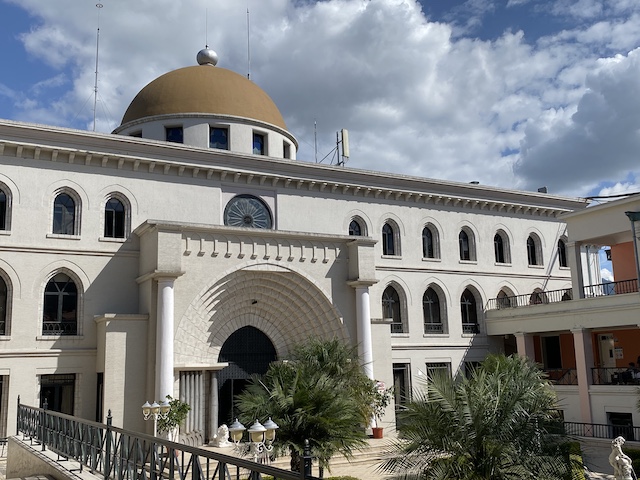Monaco’s Irina Peterson reports on her adventure of a lifetime to help save the Oceans.
February 4th: Quito
Quito met the highest expectations! When I say “highest”, it is also because its at a 2,800m altitude. Arriving after a long journey from Monaco, my adjustment here was a bit difficult. I was gasping for air every few steps I took, but what an interesting place. The old colonial town is a beautiful architectural collection of churches, cathedrals and state buildings. I should have had more time to visit, take time and learn all the great history of this lovely part of Quito.
The highlight of my stay in Quito was a visit to San Francisco University (USFQ) and meeting the Dean of Scientific Programs, Research and External Affairs Diego Quiroga. He is also the Director of the Galapagos Campus, a four-year master program in Environment and Sustainability.
Stay tuned for my post on 14th of February from Galapagos and you will learn more about this project and the bridge we are creating with Monaco. Diego has many reasons to be proud of what USFQ has achieved in its three decades of existence. With a campus of over 8,000 students, it is truly one of the best universities in South America. Here are some pictures from my visit on the campus.
February 6: Discovering the Charles Darwin Foundation
It is a dream came true … arriving in Galapagos and being surrounded by all its incredibly rich nature! I made a few friends among the giant land tortoises – this one I named Sancho. He is huge and about 100 years old.
It was very exciting to finally arrive at the Charles Darwin Foundation, where I was met by Maria Jose – the Science Director, together with the fundraising team and Macarena, the scientist in charge of the joint project with the Prince Albert II of Monaco Foundation.
I learned of the challenges experienced by the marine turtles due to the ever-increasing number of speed boats here that are responsible for most of their deaths. The two foundations have jointly created a program to track and study the behaviour of the turtles in order to limit the boat speeds and their course in specified areas. One more year of data is needed in order to establish a model which can then be implemented. Macarena’s eyes were lighting up as she was giving me all these details about the turtles behaviour.
It was then my turn to talk about my Ocean Amazon project, how I’m counting the days before meeting my SEAsters and boarding the eXXpedition boat, and how we are also contributing as “citizen scientists” to a better understanding of the plastic problem on the environment. The connection was real and words were flowing.
The day went by so quickly, far too quickly. Stay tuned, I’ll be bringing you more adventures tomorrow!





